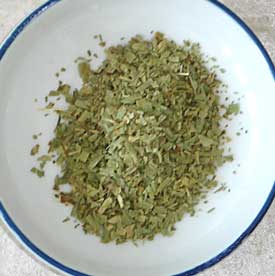Tarragon
 |
A pinch of fresh tarragon is usually all that is needed to increase depth of flavor in a dish. |
Tarragon, with its unique aroma and taste, is a classic French cooking favorite. The most noted accent is similar to anise followed by licorice and cinnamon.
History
While tarragon received an introduction to the some time in the late 1700s, it has long received accolades in . Recognized as the “king of herbs,” the fresh leaves, when combined with chives, chervil, and parsley becomes what is known as fines herbs.
and are the major producers of tarragon.
Varieties
Specialty shops will carry Russian, German, and French tarragon (favored in cooking). Tarragon vinegar is less easy to find but is a salad favorite.
Tarragon is also available dried or in powder form.
Buying Tips
• Fresh tarragon appears in most stores from June-September. Herbs will remain fresh for about a week when refrigerated. Freeze if necessary.
• The French variety is not the easiest herb to propagate as it cannot be grown from seed. Mexican marigold (winter tarragon) is a suitable alternative with only a slightly more tangy bite. It is hardy and is not as finicky about soil conditions.
• Tarragon is commonly used in flavored oils and vinegars. Always purchase infused vinegars and oils from a trusted merchandiser to assure you’re getting the best quality that is safe for consumption.
Storage Tips
In dried form, tarragon may actually retain its fine qualities longer than some other herbs. Use within six months for best flavor.
Usage Tips
• Stir a pinch of tarragon into white wine vinegar and pour over a bowl of greens.
• Sprinkle a small amount of tarragon over glazed carrots just before serving.
• While this herb is popularly associated with béarnaise sauce, it can be incorporated into mustard-based sauces, relishes, and butter.
Substitution Tips
Equal amounts of fennel, anise, dill, rosemary, or basil.
Try one of our favorite tarragon recipes:
Quick Tarragon-Mustard Chicken
Turkey Tarragon Pitas





